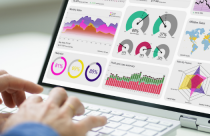How Important Are Data Availability Statements (DAS)?

Is public access to the raw data that underlies the findings of published articles important for research? Should readers be given access to this data? Data availability statements (DASs) serve this purpose. They are beneficial for researchers because they make raw data available for analysis by others. This can possibly increase data reproducibility and advance research.
Data Availability Statements – The Lowdown
- What is a DAS? It is a short statement that tells readers how and where they can access the original data of any published research. The original data includes raw and processed data. The statement should also include a link (if any) and reference details (such as accession numbers) to the data.
- Why include a DAS with your paper? To advance a field of research by allowing other researchers to meaningfully use the original data of a published article.
- Where can you find a DAS? This will depend on the journal’s format; however, the most likely place will be just before the References section.
DAS Types
Shared data should comply with FAIR principles (findable, accessible, interoperable and reusable). In other words, anyone must be able to download it easily, in a format conducive to further analysis. Authors can write different types of DASs as follows:
- The data are available on request. This pertains to sensitive data where there may be ethical reasons to not make the data public. For example, the authors may not ideally disclose the data obtained from human participants but can be obtained from a third party. In cases like this, reasons for the restriction and details of the person who can provide the data must be included.
- The data are included in the supplementary material or in the manuscript. Supplementary material is common practice for some journals.
- The data is publicly available with a data repository (details such as a link should be provided). The repository should be appropriate to the research field and meet the accepted criteria for that field. Furthermore, the repository must be maintained and be accessible for many years.
- The data of the figures are included within the manuscript. This type of raw data is generally unavailable and would be very useful for researchers analysing the figure.
DAS Benefits
Sharing raw data has been beneficial in research already. For example, let us consider the NCBI’s nucleotide database. Publishing DNA sequences is the norm for this field as well as many related studies have been performed using the sequences in this repository.
Is global academic collaboration and scientific advancement dependent on data sharing? Or is the data within the manuscript sufficient for readers to draw up their own conclusions?
One could argue that other researchers who reuse data, re-analyze it, and provide a fresh point of view or new insights. Imagine the feedback you could get from other researchers worldwide. Meta-analysis studies will certainly benefit from the accessibility of raw data.
When it comes to research involving medical treatments, data sharing is essential to accelerate progress. Furthermore, making raw data available is a possible solution to the reproducibility crisis.
Journals that require a DAS often have a list of recommended repositories that comply with the standards relevant to the research field. According to observations, providing this information requires more time from all parties involved (due to data checking). Do you think DASs should form an essential step of the publishing process or will they simply delay the publication process? Let us know your thoughts in the comments section below.









